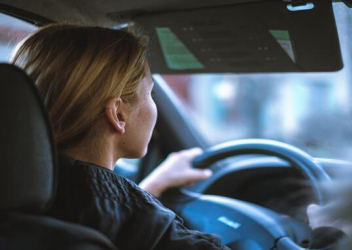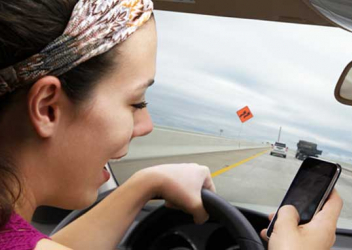Research In Action
Research In Action
Breadcrumb

This month is Distracted Driving Awareness Month, and while there has been a lot of recent attention on the negative impact of using a cell phone while driving (and rightly so!), let’s not forget about other in-vehicle distractions. These are often overlooked or underestimated in terms of their ability to distract us from the task of driving.
A curious exchange on Twitter recently occurred after singer Zara Larsson tweeted of her mother’s complaint that she “can’t see” while driving if the in-car music is too loud. Interestingly, a number of people responded to say they experience the same effect. Zara also claimed that her mother drives just fine when her favorite songs are playing, but is distracted when Zara plays songs her mother does not know or dislikes. Is Zara’s mother just trying to hog the playlist? Or could this be a real phenomenon? Can loud music impair vision?
What’s Currently Known Based on the Science
While there isn’t much evidence to support the argument that loud music can actually impair vision, one study [1] conducted by researchers at the Ear Institute of University College London found that shifting visual gaze a few degrees away from a sound source can result in slower reaction times and increased brain activity needed to concentrate on a laboratory task. This indicates that dividing attention between hearing and vision might be bad. But what about the task of driving?
A review [2] of studies that investigated the effects of music and noise on driving and other tasks found that sometimes music can reduce driver stress and aggression, and even facilitate performance. However, some studies also found that music can impair driving performance. The volume, tempo, and type of music can have different effects (which may support the argument that only certain types of loud music are a problem), but it is still unclear which specific aspect of music has the biggest effect on driving performance.
Another study from Israel [3] investigated the effects of different types of music conditions on driving performance in 85 young novice drivers. Participants took multiple trips with one of the following:
- preferred music (a playlist from home: most often pop, rock, dance, hip-hop, house, and rap styles)
- alternative calming music (no lyrics with a slow tempo and low volume)
- no music
What they found is that these young drivers prefer to drive with their own music (reporting a more positive mood and more enjoyment while driving). However, their driving performance worsened with their preferred music, including making more traffic violations and errors, engaging in more aggressive driving behavior, and increasing their risk for distraction. They also drove much safer when they listened to the alternative calming music or no music at all. So it may be that the less complex or loud the music, the less distracting it is.
These detrimental effects of music on driving performance are much more likely to be related to our limited attention span. In order to drive, we need to stay focused on the task, have situational awareness, and make attentive decisions.
The Spotlight Model of Attention
Because attention is a limited resource, our brain uses it like a spotlight[4]. We can focus the spotlight on one thing or one group of things at a time (focused attention), and we can move it around, shifting it back and forth to try to monitor multiple things (divided attention). We cannot, however, focus on everything at the same time. When one of our senses demands a lot of our attention (in this case our hearing system when music is loud or complex), less attention is available for other modalities (i.e. vision needed for driving).
This divided attention may explain why Zara Larsson’s mother claims that she cannot see where she is driving while listening to loud unfamiliar music. It may also explain why some drivers turn down the radio or stop talking when driving at night or when they are unsure of where they are going. Even though music and talking don’t affect the visual system, more attention is needed to monitor the road and read road signs at night, or to look for landmarks when lost.
One thing we do know: The brain has a lot of information to pay attention to and process while driving, so minimizing distractions is crucial, especially for novice drivers. The goal is engaged driving, where the focus is on the road.
References
[1] Pomper U, Chait M. The Impact of Visual Gaze Direction on Auditory Object Tracking. Scientific Reports 7. Article 4640 (2017).
[2] Dalton BH, Behm DG. Effects of Noise and Music on Human and Task Performance: A Systematic Review. Occupational Ergonomics 7 (2007) 143–152.
[3] Brodsky W, Slor Z. Background Music as a Risk Factor for Distraction Among Young-Novice Drivers. Accident Analysis & Prevention. 2013 Oct;59:382-93.
[4] Posner MI, Snyder CR, Davidson BJ. Attention and the Detection of Signals. J Exp Psychol. 1980 Jun:109(2):160-74.





